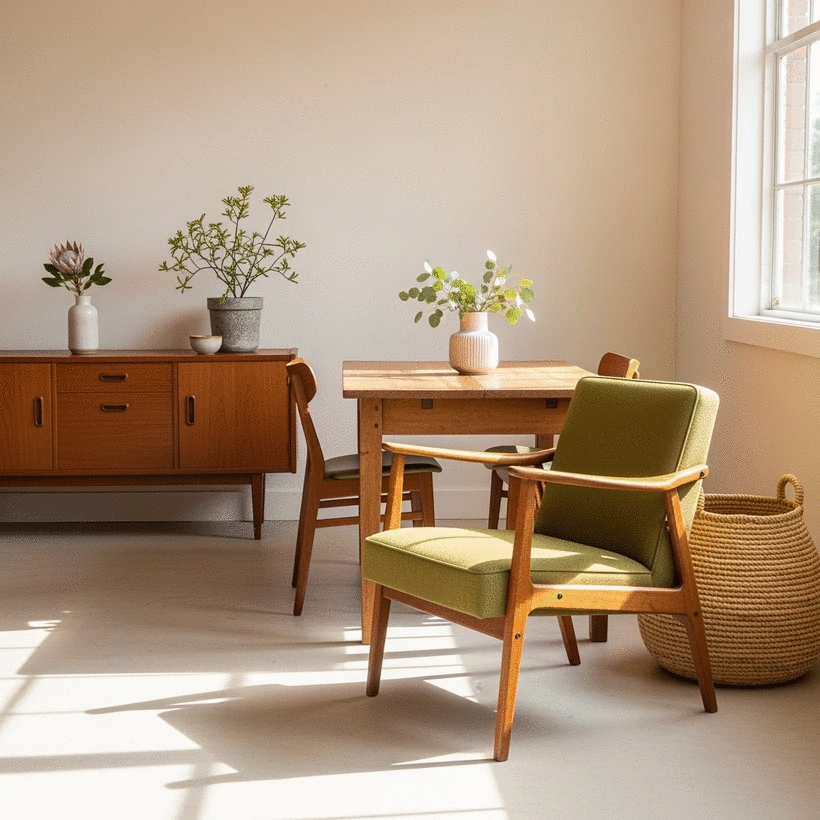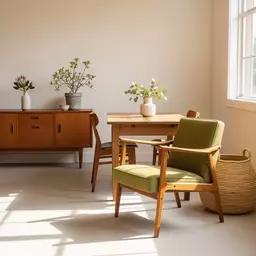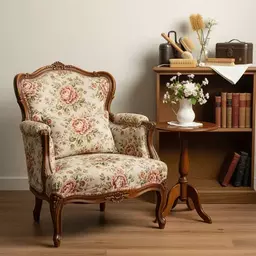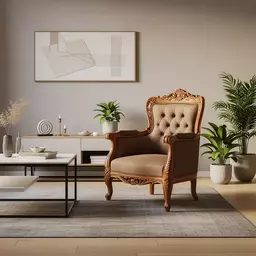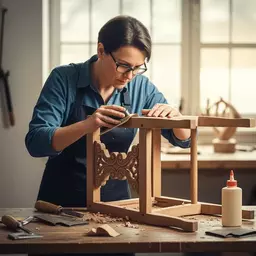Blending Antique Furniture with Modern Style

In a world overflowing with mass-produced items, the charm of antique furniture can serve as a breath of fresh air. Each piece tells a story and adds depth to modern spaces, allowing you to create a home that's uniquely yours. Are you ready to explore how to harmonize the old with the new?
What You Will Learn
- Antique furniture offers unique textures, colors, and stories that enhance modern decor.
- Assess your existing decor and personal taste to find antique pieces that complement your home.
- Evaluate craftsmanship and condition to ensure the quality of your antique selections.
- Balance scale and color palettes to seamlessly integrate antique furniture with modern aesthetics.
- Utilize room-specific tips to style antique pieces effectively in various spaces.
- Incorporate vintage decor to enhance the appeal of your home, especially during staging for sale.
- Maintain and care for your antique furniture to preserve its beauty and history.
- Create a checklist for selecting antiques that includes authenticity, style compatibility, scale, and budget.
Key Strategies for Selecting Antique Furniture
The process of selecting antique furniture involves critical considerations to ensure quality and style. Below are the key strategies you can follow:
Authenticity
Look for original hardware and signs of age that confirm the piece's history.
Style Compatibility
Consider how the antique will blend with your existing decor and furnishings.
Scale
Ensure the size of the piece fits well within the intended space without overpowering it.
Budget
Set a clear budget to prioritize your selections and prevent overspending.
Harmonizing Antique Furniture with Modern Home Design
As an antique furniture enthusiast, I find that the charm and character of vintage pieces can harmoniously coexist with modern home design. Antique furniture brings a sense of history and personality into contemporary spaces, making them feel more inviting and unique. Imagine a beautifully restored Victorian side table sitting beside a sleek, minimalist sofa. The contrast creates a conversation starter and adds depth to your decor! For more inspiration on combining styles, Erikka Dawn Interiors offers valuable insights on mixing vintage and contemporary elements.
In today's world, where mass-produced items dominate the market, integrating antiques can set your home apart. By harmonizing these timeless pieces with modern design, you not only celebrate craftsmanship but also breathe new life into your living environment. How can you begin this delightful journey of mixing the old with the new?
Understanding the Appeal of Antique Furniture in Contemporary Spaces
Antique furniture is more than just a relic of the past; it offers unique textures, colors, and stories that modern furniture often lacks. Each piece has its own history and character, bringing a layer of authenticity to your home that new items simply cannot match. Consider how a vintage armoire can serve as a functional piece while also making a stunning visual statement!
- Timeless Aesthetic: Antique pieces often feature intricate details and craftsmanship that stand the test of time.
- Unique Character: No two antiques are alike, giving your space a one-of-a-kind feel.
- Historical Connection: Owning a piece of history can create a deeper appreciation for the artistry behind furniture design.
Integrating these elements into your home design allows you to create spaces filled with personality. As I often advise readers at the Antique Furniture Guide, it's all about finding the right balance between the antique and the contemporary—an endeavor that can be both rewarding and visually stunning. For practical tips, Elle Decor provides excellent guidance on decorating with antique furniture.
Identifying Your Style: What Works Best for Your Space?
Finding the right antique pieces to complement your modern decor involves evaluating your personal taste and the existing features of your home. Take a moment to explore your style—do you lean towards rustic charm, industrial vibes, or perhaps a chic mid-century aesthetic? Understanding your preferences will guide your selections and ensure they blend harmoniously.
- Assess Your Existing Decor: Take stock of the colors, materials, and style present in your space.
- Reflect on Personal Taste: Consider what resonates with you—whether it’s ornate Victorian pieces or sleek Scandinavian designs.
- Experiment with Combinations: Don’t hesitate to mix different styles; contrast can often create the most exciting results!
By identifying what works best for your space, you can create a cohesive look that celebrates both modern and antique aesthetics. Remember, the ultimate goal is to make your home feel personal and reflective of who you are!
Key Strategies for Selecting Antique Furniture
When it comes to selecting antique furniture, a discerning eye is essential. With my experience in the realm of vintage design, I've learned that quality assurance is critical in making the right choice. Here are some key strategies to consider when hunting for that perfect piece!
Evaluating Craftsmanship and Condition for Quality Assurance
Not all antique furniture is created equal, and evaluating craftsmanship is vital for ensuring you’re investing in a quality piece. Look for signs of authenticity, such as original hardware and quality materials, which can greatly affect durability and value. Here are some tips to assess a piece:
- Inspect for Authenticity: Check for markings, labels, or stamps that indicate the piece's origin.
- Examine Materials: Solid wood construction often signifies better quality compared to particle board.
- Evaluate Condition: Look for signs of wear, but remember that some patina adds character!
By carefully evaluating each piece’s craftsmanship and condition, you can make informed choices that will enhance your home and last for years to come!
Integrating Antique Furniture with Modern Aesthetics
Once you've identified the right pieces, the next step is seamlessly integrating them into your modern decor. Balancing scale, proportion, and color palettes is key to achieving a harmonious look. Here are some effective ways to enhance the aesthetic:
- Balance Scale: Choose pieces that fit the scale of your room; oversized antiques can overwhelm a small space.
- Coordinate Colors: Select a color palette that ties in both modern and antique tones, creating visual cohesion.
- Highlight Features: Use modern decor to accentuate the unique characteristics of the antique pieces.
Remember, the goal is to create a space that feels unified while celebrating the distinct beauty of your antique furniture. This thoughtful integration can lead to surprising and delightful discoveries in your home!
Room-Specific Tips for Mixing Antique and Modern Decor
Styling antique furniture varies from room to room, and each space presents unique opportunities for expression. Whether in the living room, bedroom, or dining area, consider how your antique pieces can enhance the overall design. Here are some tips for various rooms:
- Living Room: Pair an antique coffee table with a contemporary sofa for a stunning focal point. For ideas on achieving balance and style, Styylish offers a comprehensive guide.
- Bedroom: Integrate a vintage dresser with modern bedding to create a cozy yet sophisticated atmosphere.
- Dining Area: Use an antique sideboard to display modern tableware, bridging the past with the present.
By creatively styling these pieces in each room, you’ll find that antique furniture can truly shine, adding warmth and personality to your home!
Incorporating Vintage Decor into Your Home Staging
If you’re preparing your home for sale, vintage elements can significantly enhance its appeal. Antiques not only tell a story but can also create an inviting atmosphere for potential buyers. Consider these strategies when staging your home:
- Use Statement Pieces: Showcase eye-catching antique furniture in key areas to draw attention.
- Maintain Cohesiveness: Ensure that antique decor fits the overall style of your home staging.
- Highlight Functionality: Position antiques in a way that shows how they can be used in modern living.
Incorporating vintage decor can elevate the perception of your home, making it feel unique and welcoming. Remember, every detail counts when aiming to capture the hearts of prospective buyers!
Pro Tip
When selecting antique furniture, consider its story. Each piece has a narrative that can enhance your home's ambiance. Incorporate a small card or label nearby that shares its history or origin. This not only educates guests but can also spark fascinating conversations!
Frequently Asked Questions About Integrating Antique Furniture
Q1: Why should I consider antique furniture for a modern home?
A1: Antique furniture brings unique textures, colors, and stories that add character and depth to contemporary spaces. It offers a timeless aesthetic, unique character (as no two pieces are exactly alike), and a historical connection that modern mass-produced items often lack, making your home feel more inviting and distinctive.
Q2: How do I ensure an antique piece will blend with my existing modern decor?
A2: To ensure compatibility, assess your current decor (colors, materials, style) and reflect on your personal taste. Consider if you prefer a rustic, industrial, or chic mid-century aesthetic. Don't be afraid to experiment with combinations, as contrast can often create exciting results. Balancing the scale and coordinating color palettes are also crucial for seamless integration.
Q3: What should I look for to determine the quality and authenticity of antique furniture?
A3: When evaluating craftsmanship and condition, look for original hardware, clear signs of age, and quality materials like solid wood construction. Inspect for any markings, labels, or stamps that indicate the piece's origin. While wear and tear are natural, excessive damage might require professional restoration.
Q4: Can antique furniture be used in any room of a modern home?
A4: Absolutely! Antique furniture can enhance any room. For instance, an antique coffee table can be paired with a contemporary sofa in the living room, a vintage dresser can complement modern bedding in the bedroom, or an antique sideboard can display modern tableware in the dining area. The key is creative styling to integrate them harmoniously.
Q5: How do I care for and maintain antique furniture in a modern home?
A5: Proper care is essential for longevity. Gently dust regularly with a soft, dry cloth, and avoid direct sunlight to prevent fading. Maintain a stable humidity level (40-60%) to prevent wood warping. Always use coasters or placemats to protect surfaces from scratches and heat. For deeper care, use quality wax or polish designed for antiques and address minor issues promptly. For significant repairs, consult an antique restoration expert.
Maintaining and Caring for Antique Furniture in Modern Homes
Caring for antique furniture is not just about preserving its beauty—it's about honoring the history and craftsmanship that comes with each piece. In our fast-paced world, integrating these treasures into modern homes can be a challenge, but it can also be incredibly rewarding! With the right maintenance, your antique furniture can remain a stunning focal point for years to come.
Here are some essential preservation tips tailored to mixed-use environments where antique pieces are likely to coexist with modern furnishings:
- Keep it Clean: Gently dust your furniture with a soft, dry cloth to prevent dirt buildup.
- Avoid Direct Sunlight: Position your pieces away from direct sunlight to prevent fading and damage.
- Control Humidity: Aim for a stable humidity level between 40-60% to prevent wood warping or cracking.
- Use Coasters: Protect surfaces from scratches and heat by using coasters or placemats.
Creating a Step-by-Step Checklist for Your Antique Selection
Choosing the perfect antique pieces for your home requires thoughtful consideration. I always recommend creating a checklist to help guide your decisions. Below are key factors to include:
- Authenticity: Look for original hardware and signs of age that confirm the piece's history.
- Style Compatibility: Consider how the antique will blend with your existing decor and furnishings.
- Scale: Ensure the size of the piece fits well within the intended space without overpowering it.
- Budget: Set a clear budget to prioritize your selections and prevent overspending.
Furniture Maintenance: Techniques for Longevity
Preserving the quality and appearance of antique furniture requires specific care techniques. Here are some practical methods to keep your beloved pieces looking their best:
- Regular Polishing: Use a quality wax or polish designed for antiques to maintain luster.
- Repair Minor Issues: Address small scratches and dents promptly to prevent more significant damage.
- Reupholster Wisely: If reupholstering, choose fabrics that enhance the antique's character while adding comfort.
- Professional Assessment: For significant repairs or restorations, consider consulting an antique restoration expert.
Engaging with Your Collection: Final Thoughts
As I engage more with my own collection of antique furniture, I realize how rewarding it is to see these pieces thrive in modern settings. If you're looking for inspiration, consider showcasing your antique furniture through before-and-after photos. This can help illustrate how effectively these treasures can be integrated into contemporary spaces.
Remember, every antique piece you select should resonate with your personal style and enhance the story of your home. Choosing thoughtfully—whether it’s a charming side table or a grand armchair—can transform your space into a harmonious blend of history and modernity. How will you begin your journey of integrating antique furniture into your home?
Recap of Key Points
Here is a quick recap of the important points discussed in the article:
- Antique Furniture's Appeal: Vintage pieces add unique character, historical connection, and timeless aesthetics to modern spaces.
- Style Identification: Assess your existing decor, reflect on personal taste, and experiment with combinations to find the right antique pieces for your home.
- Quality Assurance: Evaluate craftsmanship and condition by checking for authenticity, examining materials, and assessing overall wear.
- Seamless Integration: Balance scale, coordinate colors, and highlight the unique features of antiques to create a unified aesthetic.
- Room-Specific Styling: Use antique furniture strategically in living rooms, bedrooms, and dining areas to enhance modern decor.
- Maintenance Tips: Regularly clean, avoid direct sunlight, control humidity, and use coasters to preserve antique furniture.
- Step-by-Step Checklist: Create a checklist covering authenticity, style compatibility, scale, and budget when selecting antiques.



